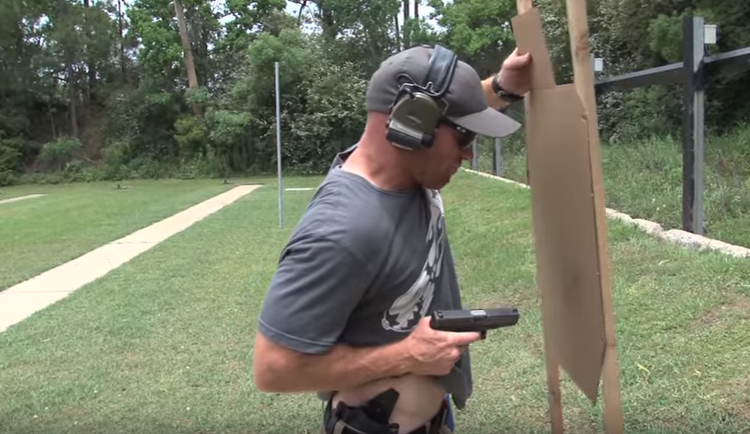
How do you shoot a bad guy if he’s right on top of you?
![]()
![]()
Typically, you practice shooting with a solid stance, good grip, and arms fully extended in front because that is the way to get the more accurate shots on target. It makes sense to practice that way if all you are concerned about is poking holes as close as possible to the X. While that practice is certainly beneficial, it is not the only shooting position you need to practice because most real-world gunfights don’t happen standing still or with good posture. In fact, most hostile engagements happen within arms reach of your attacker.
What would you do if your attacker is right on top of you, such as when attacking with a knife, fists, or baseball bat? When that happens, you don’t have the luxury of extending the gun all the way out in front of you with the sights perfectly lined up. If you take that posture, the bad guy can knock the gun away, or worse, take it from you.
Instead, you need to learn to shoot from “retention,” a position where you have maximum control over the gun yet can still put effective shots on target when the target is close enough you can smell his stinky breath.
Basic Positioning
Unlike normal shooting at full extension, shooting from retention keeps the gun right by your side, with your elbow bent. This is a one-handed shot, as your other hand will likely be occupied fending off your attacker.
Speaking of your other hand, get it out of the way! Remember that safety rules about not pointing a gun at anything you don’t want to shoot? That includes your hand. If you’re fending off an attacker, make sure your hand and arm are out of the line of fire. If you’re not fending off an attack, plaster your support hand flat against your chest to keep it out of the way.
If you’re concerned about shooting without seeing the sights, understand that at this close-in distance, you have higher odds of hitting your target than missing him. The natural motion of getting the gun into this position will likely point the muzzle right into a center mass shot.
Fire the Shot(s)
Now that the gun is drawn and pointing at the bad guy, there is one more adjustment to make before firing: angle the gun out by tilting it about 45 degrees away from your body. Why? Semi-autos slides must be free to move for the gun to fire repeat shots. If the slide snags on your clothing, it will only fire one shot when you likely need more. By tilting the slide away from your body, you free up the slide and reduce the chances of it snagging and ending up out of battery.
The other advantage of this angle or outward cant is better recoil management, a challenge when shooting with one hand since you don’t your support hand to help. The slightly canted angle of your wrist and forearm helps minimize muzzle rise, helping get the gun back on target faster for follow-up shots.
Squeeze off at least one round with the understanding that you will likely need more. Depending on how horizontal the gun is, your first shot will either hit the abdomen or pelvic region, both of which are debilitating shots. Be prepared to keep firing until you can create sufficient distance to break free from the attacker. The point of shooting this close is not to kill your attacker but to fend him off from continuing the attack. Remember: the goal is always to stop the threat.
Create Distance
After your initial volley of shots and as soon as the attacker loses grip on you, create distance and separation by backing up and away while keeping the gun trained on your attacker in case the threat is not over. Once you create distance between you and your attacker, then you can consider presenting the gun at full arm extension so you can bring the sights up to your eyes. It doesn’t mean you have to, but it might be safe if there is enough distance. If you have room behind you, retreat a few feet, making it harder for your attacker to reach you and your gun. At this point, you must decide if more shots are necessary to stop the threat. Only you can decide this in the moment.
One especially important consideration when creating distance: know where you’re stepping. This can be tricky because you’re keeping an eye on your attacker while watching your step, but you have to do it. You don’t want to trip and fall, giving your attacker a second chance to hop on top and continue the assault.
Wrap Up
Shooting from retention is a valuable life-saving skill that, like all gun handling, must be practiced to perfect. The first time you shoot this way, you’ll be startled at the sound of the gun and the rush of the muzzle blast on your face. Unlike holding the gun way out in front of you, when it is next to your body, you feel everything except the ballistic impact. It takes some getting used to. But it’s a skill worth having in your arsenal.
ABOUT THE AUTHOR:
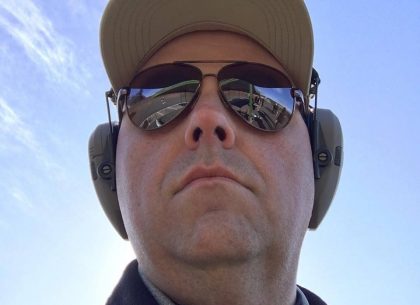
David Workman is an avid gun guy and a contributing writer to several major gun publications. As an NRA-certified instructor, David trains new shooters on basic handgun skills and CCW requirements and is a strong advocate for training as much as you possibly can. “Real-life shootouts don’t happen at a box range.”
![]() You may also enjoy these popular articles:
You may also enjoy these popular articles:
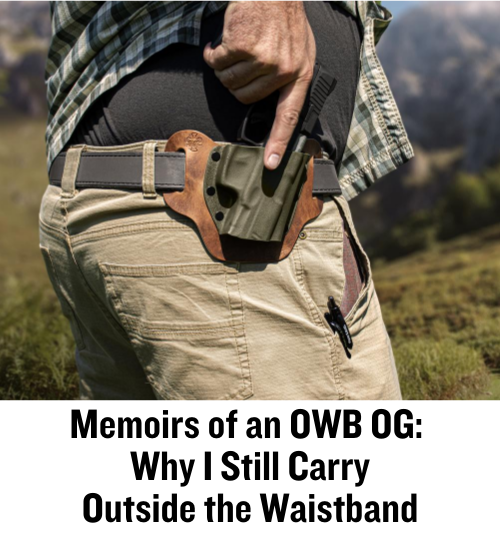
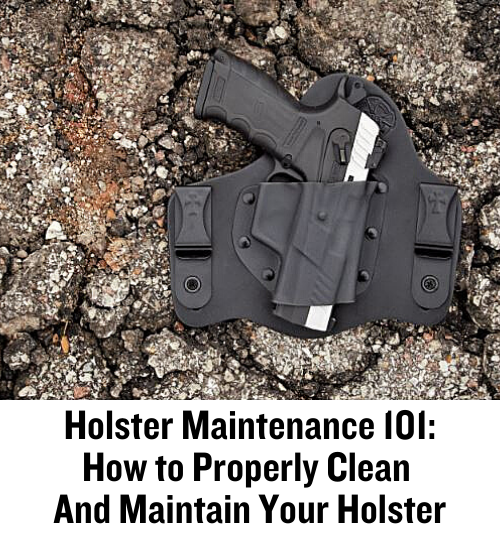
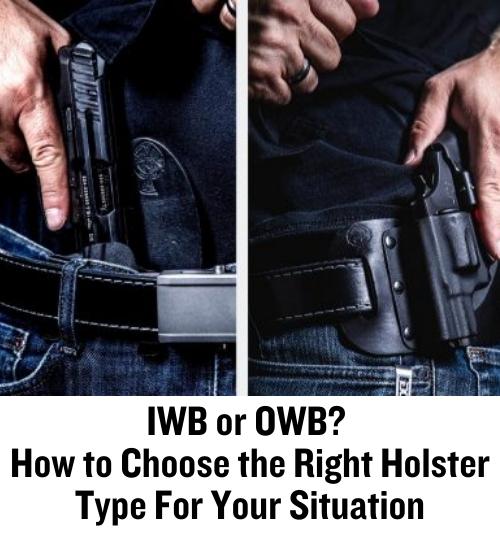

©MTC Holsters, LLC and CrossBreed Holsters Blog, 2021.
Unauthorized use and/or duplication of this material without express and written permission from this site’s author and/or owner is strictly prohibited. Excerpts and links may be used, provided that full and clear credit is given to David Workman and the CrossBreed Blog with appropriate and specific direction to the original content.
![]()

